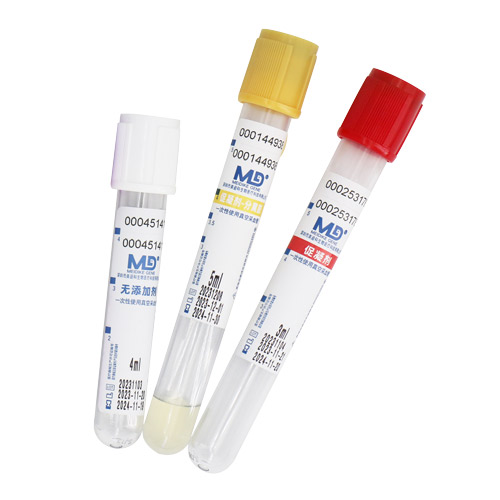血清采血管: 您需要知道的一切
2025-05-15
在医疗测试和诊断方面, 血清血液收集管 在确保准确可靠的结果中发挥关键作用. 这些试管专门设计用于将血清与血液样本分开, 使它们在实验室和医疗机构中必不可少. 在这篇博文中, 我们将探索哪些血清收集管, 他们如何工作, 他们的申请, 以及有效使用它们的最佳实践.
什么是血清血液收集管?
血清血液收集管是一个专门的容器,用于收集和处理用于实验室测试的血液样本. 这些管通常由玻璃或塑料制成,并包含特定的添加剂, 例如凝块激活剂, 促进血清与血液的分离. 血清是清晰的, 血液凝结后仍保留的淡黄流体并已去除凝块.

血清血液收集管如何工作?
血清试管旨在促进血液样本的凝结. 将血液抽入管子后, 凝块激活剂加速了凝结过程. 一旦血液凝结, 通常将管子离心以将血清与血细胞和凝块分开. 然后将所得的血清用于各种诊断测试.
血清管中的常见添加剂
血清收集管通常包含添加剂:
– 凝块激活剂: 这些加快了凝结过程.
– 凝胶分离器: 离心过程中的凝胶屏障形式, 将血清与血细胞分开.
这些添加剂确保血清没有污染物并准备进行测试.
血清血液收集管的应用
血清血液收集管用于广泛的医疗和诊断应用, 包含:
1. 血液化学测试: 测量葡萄糖, 胆固醇, 和肝酶.
2. 免疫学: 检测抗体或抗原.
3. 内分泌学: 激素水平测试, 例如甲状腺功能测试.
4. 毒理学: 测量药物水平或检测毒素.
如何使用血清血液收集管
正确的技术确保样本的完整性:
- 收藏: 使用无菌针头抽血,并使其流入管子.
- 反转: 用凝块激活剂轻轻反转试管以混合; 不要大力摇晃.
- 凝结时间: 让样品代表 30 分钟 1 一小时完整的凝结.
- 离心: 将管子旋转以将血清与凝块分开. SST管将显示一个明显的障碍物.
- 血清提取: 仔细提取血清进行分析, 避免对细胞污染.
也许你也喜欢
版权所有©2023. 医药科技有限公司, 有限责任公司
















